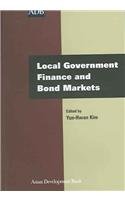Question
Assume that annual interest rates in the U.S. are 3 percent, while interest rates in Japan are 6 percent. Assume that the current spot rate
Assume that annual interest rates in the U.S. are 3 percent, while interest rates in Japan are 6 percent. Assume that the current spot rate is 100/$.
Suppose the U.S. risk-free interest rate has been steadily rising from 2% 3 years ago to 5% currently. The Euro interest rate has remained constant over the same time period at 6%, what should be happening to the Euros forward premium/discount?
What is the impact of an appreciation of the USD on
U.S. exports
U.S. imports
The dollar value of U.S. investments in the foreign country (and denominated in the foreign currency)
The foreign currency value of foreign investments in the U.S. (and denominated in dollars)
Answer all of the above with a simple or
Suppose there is a large increase in the income level in Mexico and a much smaller increase in the U.S. income level. Everything else equal, what is likely to happen to value of the MXN?
The INR appreciates 4% versus the USD. The EUR depreciates 10% versus the USD. Whats the approximate appreciation or depreciation we might see in the EUR/INR exchange rate?
Based on interest rate parity, the larger the degree by which the U.S. interest rate exceeds the foreign interest rate, then?
If the spot rate is C$1.12/$ and the forward rate is C$1.02/$, which currency exhibits a forward discount?
Bank believes the New Zealand dollar will appreciate over the next 6 months from $.41/NZ$ to $.43/NZ$. The following 6-month interest rates apply: (the rates are periodic rates so you do not need to adjust them at all we do not need to multiply by 180/360 or anything like that)
Currency Lending Rate Borrowing Rate
Dollars 3.5% 4.25%
New Zealand dollar (NZ$) 2.6% 3.05%
Bank has the capacity to borrow either NZ$10 million or $5 million. If Banks forecast if correct, what will its U.S. dollar profit be from speculation over the 6-month period?
Interest rates are 6.5% in the U.S. and 4% in Canada. Jacque carry trader borrows C$10,000,000 to execute a carry trade. At the start, the exchange rate is C$1.1325/$. After one year, the exchange rate is C$1.1175/$.
If the C$ had not appreciated or depreciated over the year (stayed at C$1.1325/$) verify that Jacque would have made C$250,000. Whats special about C$250,000? Youll see if you take the interest rate differential and multiply that percentage profit by the amount of Canadian dollars Jacque borrowed.
A U.S. firm with net cash inflows denominated in euros could partially offset this exposure by issuing bonds denominated in euros.
Assume that the U.S. and Japan nominal interest rates are equal. Then, the U.S. nominal interest rate decreases while the Japan nominal interest rate stable. According to the international Fisher effect, this implies expectations of ____ than before, and that the Japan yen should ____ over time against the dollar.
Step by Step Solution
There are 3 Steps involved in it
Step: 1

Get Instant Access to Expert-Tailored Solutions
See step-by-step solutions with expert insights and AI powered tools for academic success
Step: 2

Step: 3

Ace Your Homework with AI
Get the answers you need in no time with our AI-driven, step-by-step assistance
Get Started


